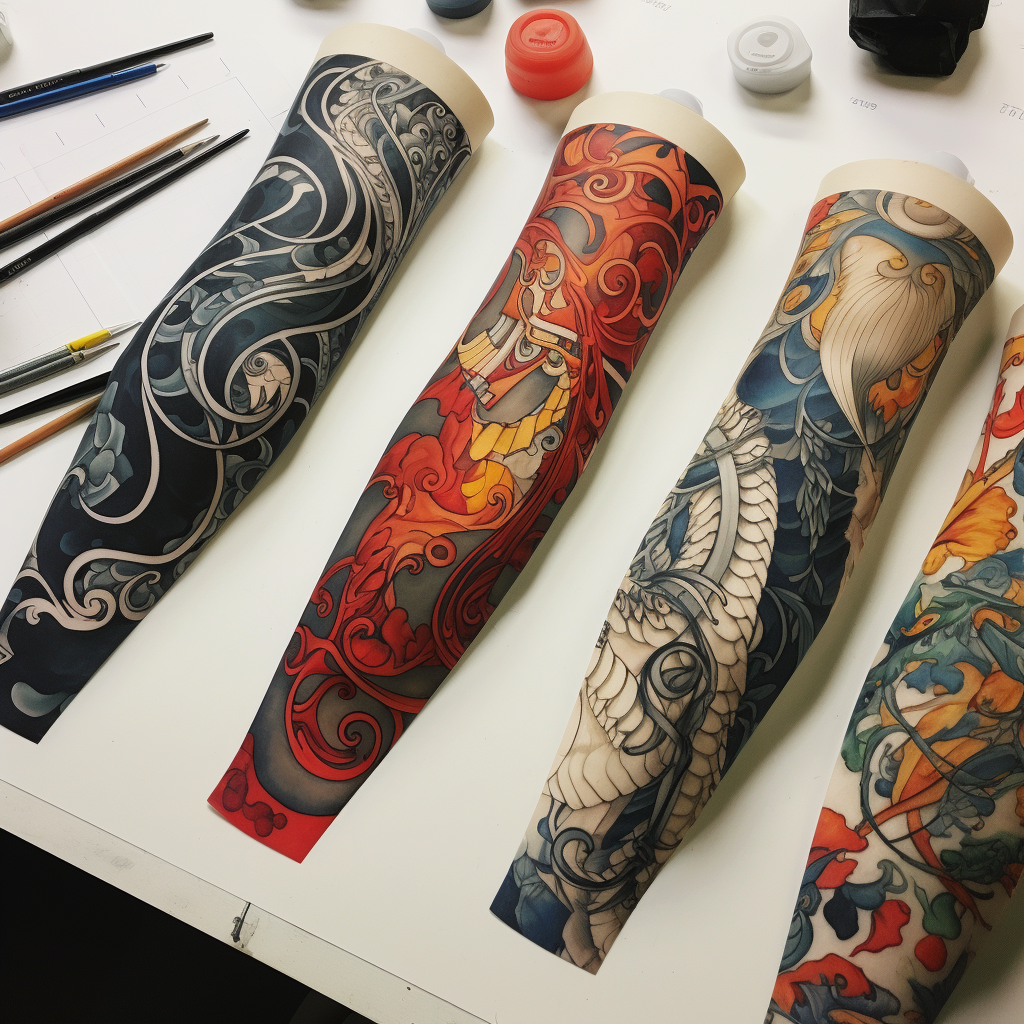Sleeve Mastery: From Basics to Advanced Design Techniques

Fashion is a dynamic field, a perfect amalgamation of form and function. Among its various elements, sleeves play a crucial role, often going unnoticed but significantly impacting the garment’s overall aesthetics and comfort. Whether you’re a fashion aficionado, a budding designer, or someone who simply appreciates a well-made outfit, understanding sleeves—types, parts, their development, and the art of drafting them—can enrich your fashion experience.
Sleeves aren’t just fabric extensions attached to a garment; they are a critical design element that influences both style and wearability. The type of sleeve can change the look of an outfit entirely, turning a casual t-shirt into a formal piece or making a business suit appear relaxed and comfortable. Moreover, sleeves are a fascinating subject from a design perspective. They have evolved historically, right from the basic functional need for covering arms to becoming a vital part of contemporary fashion, involving intricate design, cutting-edge materials, and complex construction techniques.
This comprehensive guide aims to explore the world of sleeves in depth. From breaking down the anatomy of a sleeve to discussing various types, we’ll delve into the development processes and even touch upon the drafting skills required to create sleeves. Tailored for both novices and experts, this article will serve as a valuable resource for anyone interested in garment construction.
Whether you’re deciding on the type of sleeve to incorporate in your next design project or simply curious about the intricacies of this often-overlooked garment component, this guide will equip you with the knowledge you need.

The Anatomy of a Sleeve
When discussing sleeves, it’s essential to understand the terminology and parts that make up this crucial design element. Knowing the anatomy of a sleeve allows designers, seamstresses, and fashion enthusiasts to communicate effectively and make informed decisions during the garment creation process.
2.1 Sleeve Cap
The sleeve cap is the uppermost part of the sleeve. It’s the curve that fits into the armhole of the garment. The shape and depth of the sleeve cap can vary, and its design often determines how the sleeve will drape over the shoulder.
2.2 Sleeve Head
Situated at the top of the sleeve, adjacent to the sleeve cap, the sleeve head provides additional height and shape to the sleeve. This part often contains a layer of padding or additional fabric to give structure to tailored garments like suits and jackets.
2.3 Hem
The hem is the finished edge at the bottom of the sleeve. It can be a simple fold-over or feature more elaborate finishes like a cuff, depending on the garment’s style and function.
2.4 Seam Line
This is the line where the sleeve fabric is sewn together. The placement and type of seam line can significantly impact both the aesthetic and comfort level of the sleeve.
2.5 Placket
The placket is a V-shaped opening near the cuff, generally found in formal shirts. It makes it easier to roll up the sleeves and adds a refined touch to the garment.
2.6 Cuff
Located at the end of the sleeve, the cuff is an additional layer of fabric that can be functional or decorative. Cuffs are more common in formal attire and can come with buttons, snaps, or even zippers.
2.7 Elbow Dart
In some tailored garments, an elbow dart is included for extra shaping. It allows for more natural arm movement and provides a snug fit around the elbow area.
2.8 Gusset
A triangular or diamond-shaped piece of fabric inserted into the underarm seam, the gusset enhances the range of motion. This is particularly useful in athletic and workwear garments.
Understanding the distinct parts of a sleeve equips you with the tools to analyze, critique, and ultimately create better designs. Armed with this vocabulary, you’ll be better prepared to discuss and understand the intricacies involved in sleeve construction.
Types of Sleeves
In the realm of fashion design, sleeves take on many shapes and forms, each contributing unique aesthetic and functional elements to a garment. Understanding the different types of sleeves can be akin to learning a new language—one that speaks to both designers and fashion aficionados alike. Below, we delve into the various types of sleeves you’re likely to encounter in the sartorial world.
3.1 Set-in Sleeve
The set-in sleeve is perhaps the most common type you’ll find. It is sewn into a regular armhole and has a seam that aligns closely with the shoulder joint. This style offers a natural fit and is generally comfortable, making it ideal for a wide range of garments from casual t-shirts to formal blazers.
3.2 Raglan Sleeve
Originating from Lord Raglan, who desired greater arm mobility after losing his arm in battle, the raglan sleeve extends up to the neck with a slanted seam from the underarm to the collarbone. This design is common in sportswear and casual attire, valued for the freedom of movement it offers.
3.3 Cap Sleeve
Cap sleeves just barely extend over the shoulder and do not go below the underarm. This style is generally more decorative than functional, often seen in feminine blouses and dresses. They add a dainty, aesthetic appeal but offer little coverage or warmth.
3.4 Dolman Sleeve
Also known as the batwing sleeve, the dolman starts wide at the armhole and tapers towards the wrist. This design creates a draping effect, offering both comfort and a unique style statement. It’s often seen in casual wear and knit fabrics.
3.5 Bishop Sleeve
Reminiscent of medieval attire, the bishop sleeve is characterized by fullness gathered at the wrist with a cuff. This design imparts a dramatic flair and is popular in bohemian and romantic styles.
3.6 Others
- Bell Sleeve: Flares out towards the wrist, creating a bell-like shape.
- Flutter Sleeve: Very loose, falling in gentle folds, ideal for lightweight fabrics.
- Puff Sleeve: Gathered at both the shoulder and cuff, creating a voluminous appearance.
Importance of Sleeves in Garment Design
Though they may seem like a minor detail in the grand scheme of fashion, sleeves can be game-changers in garment design. From functional aspects like providing coverage and facilitating movement to aesthetic roles in silhouette shaping, sleeves hold a multifaceted significance. Here, we delve into the vital roles sleeves play in the design world.
4.1 Functional Role
- Coverage: One of the primary roles of sleeves is to provide coverage. Long sleeves are essential for cold climates, religious dress codes, or occupational requirements.
- Range of Motion: Sleeves like raglan and dolman offer greater mobility, making them preferable for athletic wear.
- Sun Protection: In hot, sunny climates, long sleeves made of breathable fabric can protect the skin from harmful UV rays.
- Special Features: Sleeves can contain pockets, thumb holes, or other functional elements to enhance utility.
4.2 Aesthetic Role
- Silhouette Shaping: The type of sleeve can dramatically alter a garment’s silhouette. For example, puff sleeves add width to the upper body, balancing pear-shaped figures.
- Style Definition: The choice of sleeve can set the tone of an outfit, making it casual, formal, vintage, or modern. Cap sleeves, for example, can make a dress appear more feminine, while raglan sleeves may give a laid-back vibe.
- Visual Focus: Unique sleeve designs can serve as the focal point of a garment, drawing attention away from other areas.
- Texture and Layering: With options like ruffled or tiered sleeves, designers can add texture and layers to an otherwise simple garment.
4.3 Psychological Role
- Comfort and Confidence: A well-designed sleeve not only fits comfortably but also boosts wearers’ confidence by complementing their body shape.
- Emotional Connection: Certain styles of sleeves may evoke nostalgia or a sense of belonging, such as the bishop sleeves reminiscent of historical or cultural garments.
In essence, sleeves are far more than just an appendage to a garment; they are a critical design element that can make or break an outfit. They can define style, modify body proportions, and even evoke emotional responses. As we continue our exploration, we’ll turn our focus to the intricate process of developing sleeves.
The Development Process of a Sleeve
Creating a sleeve involves more than merely attaching a piece of fabric to a garment. It’s a meticulous process that starts from conceptualization, followed by material selection, and finally leading to prototyping and mass production. Below, we demystify this intricate development sequence.
5.1 Conceptualization
The initial phase often begins with a sketch or digital render, where the designer outlines the style, proportions, and special features of the sleeve. This is where initial decisions about the type of sleeve, its length, and any unique characteristics are made. For instance, will it be a set-in sleeve for a formal shirt or a dolman sleeve for a relaxed top?
5.2 Material Selection
Once the concept is clear, choosing the right fabric is crucial. Material properties like stretch, drape, and thickness can impact the sleeve’s fit and function. For example, lightweight materials like silk or chiffon are more suitable for fluttery sleeves, whereas structured fabrics like wool or denim may be better suited for tailored sleeves.
5.3 Prototyping
A prototype, often called a ‘muslin,’ is created to test the design before it goes into mass production. This sample allows designers to make necessary adjustments to dimensions, fit, and material. Prototypes may go through multiple iterations, being worn, washed, and tested for durability and comfort.
5.4 Technical Considerations
During this phase, various technical aspects come into play:
- Seam Allowances: Calculating the appropriate seam allowances for the type of fabric used is vital for a smooth construction process.
- Grading: Adjusting the sleeve dimensions for different sizes is known as grading. This step ensures the sleeve fits well across various sizes.
- Pattern Markings: Notches, pleat markings, or other indicators are added to the pattern to assist during the sewing process.
5.5 Mass Production
Once the prototype is approved, the design moves to the mass production stage. Here, advanced machinery and skilled workers collaborate to produce sleeves on a large scale. Quality control checks are in place at various stages to ensure consistency and adherence to design specifications.
5.6 Post-Production
After sewing, sleeves often undergo post-production processes like ironing, button attachment, or other finishing touches that add to the garment’s overall quality and longevity.
The Art of Sleeve Drafting
Drafting a sleeve is a meticulous process that blends both art and science, requiring a keen understanding of geometry, human anatomy, and design principles. This chapter explores the essential steps and techniques involved in drafting a sleeve, guiding you through the transformation of raw measurements into a functional pattern.
6.1 Measurement
The first crucial step is acquiring accurate measurements. This often involves:
- Arm Length: Measured from the shoulder point to the wrist.
- Arm Circumference: Around the fullest part of the upper arm.
- Wrist Circumference: Around the wrist where the sleeve will end.
6.2 Initial Drafting
Once you have the measurements, it’s time to draw the initial draft. This is usually done on pattern paper and involves plotting points to represent the sleeve cap, the underarm, and the hem.
6.3 Curve Adjustment
Sleeves are rarely simple rectangles. The next step involves adjusting the curves, particularly around the cap, to ensure a comfortable fit and an elegant fall. Drafting tools like French curves are often used to get these shapes right.
6.4 Adding Seam Allowances
Seam allowances are then added to the drafted pattern. The exact amount can vary, but it is usually around 1/2 inch to 5/8 inch. This provides some leeway during the sewing process and ensures a better fit.
6.5 Notches and Markings
This stage involves adding notches and other markings to the pattern. These serve as guides during the sewing process for aspects like pleats, gathers, or button placement.
6.6 Test and Adjust
After completing the draft, a test or “muslin” sleeve is created. This prototype allows for any final adjustments for fit and comfort. Once these are made, the pattern is finalized.
6.7 Final Draft
A final draft is made, often digitized for future use, especially if it will be used for mass production.
6.8 Pattern Storage
To ensure that all the hard work doesn’t go to waste, the final patterns are carefully stored. They are either digitized or kept as physical copies, usually with notes about size, fabric type, and any particular design elements.
Conclusion and Summary
As we wrap up this comprehensive guide on sleeves, it’s clear that these often-overlooked components are indeed critical elements in both the functional and aesthetic aspects of garment design. They offer more than mere utility; they define the tone, shape, and overall feel of a piece of clothing.
7.1 Key Takeaways
- Anatomy of Sleeves: We learned about the essential parts that make up a sleeve—the cap, the underarm, and the hem. These components contribute to the sleeve’s functionality and overall appearance.
- Types of Sleeves: From the ubiquitous set-in sleeve to the specialized bell and bishop sleeves, each type serves a unique purpose and lends a distinct flair to garments.
- Importance in Design: Sleeves play a dual role in both functionality and aesthetics. They provide coverage, enable movement, set style tones, and even serve as the garment’s focal point.
- Development Process: Creating a sleeve is a multi-step endeavor involving conceptualization, material selection, prototyping, and mass production. Each phase is crucial in ensuring the sleeve’s quality and fit.
- Art of Drafting: Drafting is an essential skill for customizing sleeve designs. It involves a series of meticulous steps, from measurement and initial drafting to curve adjustments and finalizing the pattern.
7.2 Final Thoughts
Sleeves are a testament to the intricate art of fashion design, encapsulating centuries of sartorial evolution and a multitude of cultural influences. Understanding their complexity deepens our appreciation for the garments we wear daily and offers valuable insights for those involved in the creation of clothing, be it professional designers or DIY enthusiasts.
Thank you for embarking on this detailed journey through the world of sleeves. Whether you’re a seasoned fashionista, an aspiring designer, or simply someone who appreciates the intricacies of clothing, we hope this guide has enriched your understanding and heightened your appreciation for this fundamental aspect of apparel.



